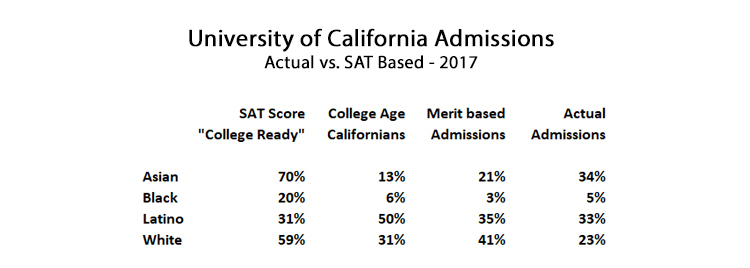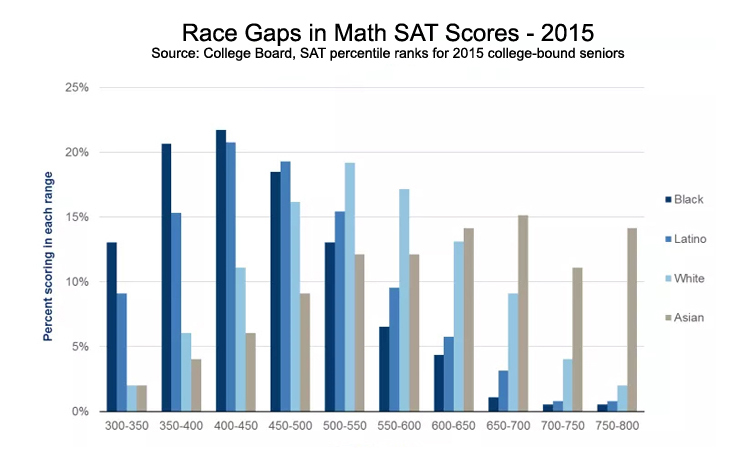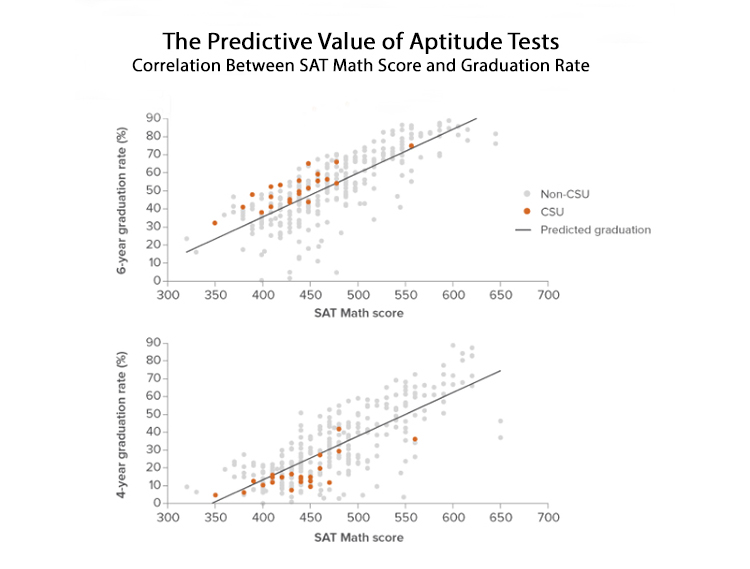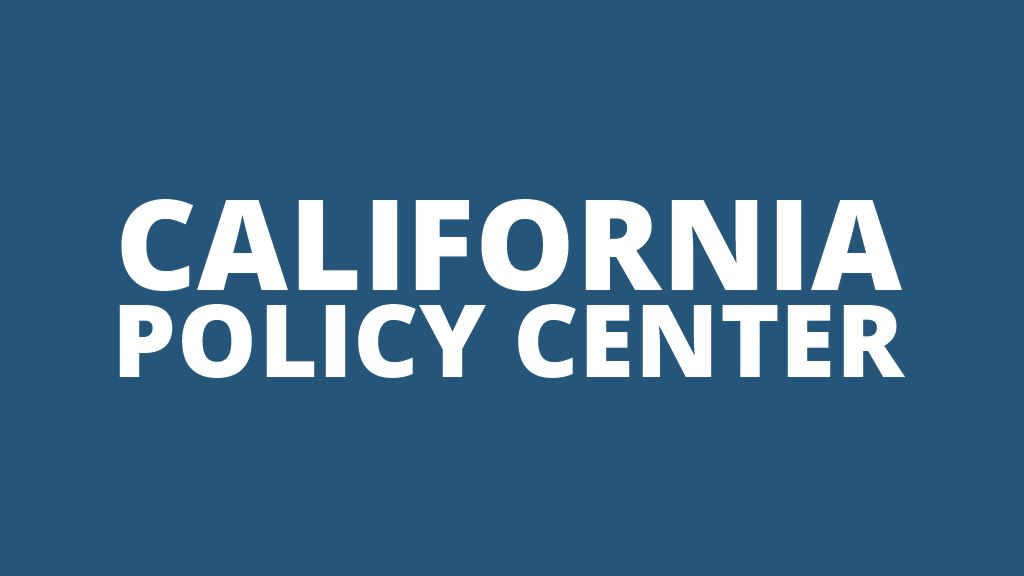Lest anyone be tempted to suggest this analysis is written under a pretense of journalistic indifference, let’s make its ideological position clear: Affirmative action, preferential hiring or admissions, or legislatively enforced quotas of any kind – based on race, gender, religion, income, or anything else relating to an identifiable “group” – is counterproductive, if not immoral. Affirmative action may masquerade as something good, but it’s not.
If policies designed to destroy America’s meritocracy are not stopped, they will destroy everything that makes America great. They will breed cynicism, corruption, mediocrity; they will sow hatred and resentment; they will encourage indifference to results and discourage hard work; they will misdirect America’s institutional priorities from productivity and innovation to bureaucratic “process” and ideological indoctrination; they will consign America to 2nd class status and ultimately rob it of both prosperity and civil cohesion.
Got that?
With all that in mind, consider the latest assault on competence in America, courtesy of the California State Legislature. It should come as no surprise that California is the source of the attack, since California’s legislature is overwhelmingly dominated by politicians who rely on the narrative of systemic racism to attract voters. Moreover, most of the Democrats that control California’s state legislature are beholden to public sector unions, the teachers’ unions in particular. For decades, these unions have made racial quotas and equality of outcome – at any cost – a cornerstone of their political agenda.
Proposition 16, put onto California’s November 2020 ballot by the state legislature, would amend the California constitution to “repeal Proposition 209, passed in 1996, from the California Constitution. Proposition 209 stated that discrimination and preferential treatment were prohibited in public employment, public education, and public contracting on account of a person’s or group’s race, sex, color, ethnicity, or national origin.”
Imagine that. California has a law that bans racism and sexism in public employment, education and contracting. We can’t have that now, can we. Better fix that right away.
In one of the most deceptive guest columns ever written, recently published by the San Diego Union Tribune, union marionette and member of the California State Assembly Shirley Weber argues that Prop. 209, which outlawed racism and sexism in California’s public sphere, actually created racist and sexist outcomes. Here is an example of Weber’s reasoning: ”
“This law [Prop. 209] has allowed discriminatory hiring and contracting processes to flourish in California. The result is that the number of women and Latinos employed by the state of California has decreased significantly relative to population growth. In 1994, Latinos were admitted to the UCs above the average rate, and African-Americans at 6 points below average; in 2019, they were admitted at 6 points and 16 points below average, respectively.”
What Weber is actually objecting to, however, is not racism caused by a law outlawing racism. Rather her objection is to allocating opportunities based on competence instead of race.

In this chart, the first column shows what percentage of students taking the SAT, by ethnicity, achieved a score at or above the minimum to be considered “college ready.” The second column shows the ethnic breakdown of college age students in California. Column three, “merit based admissions,” is the hypothetical kicker: It displays a result calculated from columns one and two. For each ethnicity, the percent of college ready students is multiplied by that ethnicity’s percent of the total pool of college age Californians in order to calculate a crude but significant indicator of what percentage of 2017 college admissions would be offered to students of each ethnicity, if admissions were offered to every applicant who scored “college ready” or better on their SAT. Column four shows the actual admissions to California’s UC System in 2017 by ethnicity.
There are a few obvious takeaways from the above chart. First of all, it becomes immediately clear that at 33 percent (col. 4) of all admissions, Latinos are admitted to the University of California in amounts almost perfectly proportional to their share, 35 percent (col. 3), of all college ready applicants. What proponents of Prop. 16 such as Shirley Weber advocate is to bring that share up to 50 percent (col. 2), which would mean Latinos would enter the UC System not based on their ability to do the work, but based on their raw percentage of the population.
Equally salient is the fact that white applicants, if SAT scores were the sole basis for admission, are clear victims of discrimination. After all, if based on their college readiness as assessed by their SAT performance combined with their percentage of the population, they should have earned 41 percent of the admissions to the UC System (col. 3), why were they only 23 percent of the incoming freshmen in 2017 (col. 4)? But there are other disparities that point to an even bigger problem.
Why, for example, do actual Asian admissions, 34 percent (col. 4), exceed the merit based admissions percentage, 21 percent (col. 3), as indicated based on their percentage of the college age population and the percentage of them achieving the SAT benchmark? Why, for that matter, are the actual Latino admissions, 33 percent (col. 4), slightly less than the amount they would theoretically earn, 35 percent (col. 3), based that same criteria?
The answer in both cases is the same, and can be best summarized in this quote taken from a report released in 2017 by the Brookings Institution:
“Race gaps on the SATs are especially pronounced at the tails of the distribution. In a perfectly equal distribution, the racial breakdown of scores at every point in the distribution would mirror the composition of test-takers as whole i.e. 51 percent white, 21 percent Latino, 14 percent black, and 14 percent Asian. But in fact, among top scorers—those scoring between a 750 and 800—60 percent are Asian and 33 percent are white, compared to 5 percent Latino and 2 percent black. Meanwhile, among those scoring between 300 and 350, 37 percent are Latino, 35 percent are black, 21 percent are white, and 6 percent are Asian.”
What this means in plain English is that in the UC System, where supposedly only the most elite high school graduates are granted admission, you will find the distribution of the higher SAT scores by ethnicity skewed even more in favor of Asian and White students than you find when evaluating how many students merely achieve the “benchmark” SAT score. In particular, this is why Asian admissions, which are arguably the only UC admissions in 2017 that were based truly on merit, skew higher than you would otherwise expect. That is also the reason that Latino admissions skew somewhat lower. And it also indicates that White applicants are discriminated against even more than shown on the table.
The next chart shows just how significantly math SAT scores differ by ethnic group.

These are not subtle differences. Most striking is the disparity occurring at the extremes of the distribution. It is those whose abilities fall within these gifted extremes who, overwhelmingly, become the inventors and researchers whose breakthroughs ensure American technological preeminence and benefit the world. Note how nearly 15 percent of all Asians were able to score over 750 on their math SAT.
Using math SAT scores as criteria, Asians are underrepresented in the University of California, even though they are overrepresented in proportion to their percentage of the population.
SAT Scores ARE Predictive of Academic Success
Just to be thorough, lest anyone repeat yet another shibboleth turned fact merely by virtue of repetition, namely, that SAT scores are not predictive of academic success, here is data that proves the value of SAT scores.
In May 2016 the Public Policy Institute of California produced a study that includes data that tracks the correlation between math SAT scores (horizontal axis) and graduation rates (vertical axis). The upper chart depicts six year graduation rates, the lower chart depicts four year graduation rates. The orange dots represent results for Cal State campuses, which were the focus of the study. The more numerous grey dots represent similar universities nationwide.
As can be seen, the trend line is unambiguous. It is roughly accurate to state that for every 50 point improvement in a student’s Math SAT score, there is a 10% greater probability that they will graduate from college. And yet California’s UC System, in pursuit of social justice, equity, and inclusion, as of May 2020 has abandoned the SAT requirement altogether. This is an astonishing denial of reality.

Despite compelling evidence that SAT scores matter, proponents of affirmative action continue their assault on these objective metrics. Proportional representation in all things, or “equity,” is their solution to group underachievement. But this approach harms the very people it is designed to help, and there are better solutions.
The Consequences of Affirmative Action, and the Tough But Much Better Alternatives
The direct correlation between SAT scores and graduation rates, along with the huge gaps in SAT scores between ethnic groups, yields an inescapable conclusion: Students are less likely to experience academic success when they are admitted to schools where the average SAT of the student body is significantly higher than their own score. This conclusion can be applied across the spectrum of higher education. Academically unqualified students admitted to elite universities are more likely to fail academically, whereas if they had attended a less selective college they might have excelled. Similarly, academically unqualified students admitted to reputable but not top-tier colleges with lower SAT scores are also more likely to fail, whereas if they had instead enrolled in a community college they might have excelled.
To cope with this, universities have invented entire new fields of study oriented to “social justice,” with watered down majors designed to accommodate students who lack the aptitude to keep up in more rigorous academic disciplines. At the same time, these universities have hired armies of bureaucrats whose mission is to enforce “diversity, equity and inclusion.” In practice the role of these administrators is to inculcate unqualified students with the notion that their academic struggles are the product of racism, rather than the plain fact that they should never have been enrolled to begin with.
Heather MacDonald, a researcher with the Manhattan Institute, has written extensively on this topic. Her recent book, The Diversity Delusion, provides overwhelming evidence of how harmful affirmative action is to minority students who could excel if they were simply treated the same as everybody else. She writes, “racial preferences paper over the vast academic skills gap by catapulting minority students into academic environments for which they are unprepared. By allowing the country to turn its attention away from that skills gap, colleges are retarding the cause of racial progress, not advancing it.”
Along with placing students in academic environments where they can compete and excel, the solution to disparities in academic group achievement needs to go to the source: reform of K-12 public schools. Taking this step, unfortunately, runs into resistance from the most powerful political special interest in California, the teachers’ unions. Even bipartisan attempts to incrementally reform California’s K-12 public school system have been stopped by these unions.
A good example of this is the Vergara case, dismissed by the California Supreme Court in 2016 on a technicality despite sailing through the appellate courts. Vergara was predicated on the assertion that quality public education is a civil right. It petitioned for three common sense reforms to union negotiated work rules: a streamlined process to fire incompetent teachers, the ability during layoffs to retain excellent teachers instead of teachers with seniority, and extension of the probationary period for new teachers beyond the mere 18 months of classroom observation currently in effect.
Along with opposing reforms as basic as those proposed in the Vergara case, California’s teachers’ unions have used their political clout to wage war on alternative educational venues. The most glaring example of this is the suppression of charter schools, which are a threat to the monopoly the teachers’ unions have on traditional public schools. Similar threats in the form of private schools, parochial schools, virtual schools, home schooling, and recent pandemic inspired innovations such as expanded home schooling coops, micro-schools and “learning pods,” are all under relentless attack from the teachers’ unions.
What ought to be on California’s ballot this November is not a restoration of affirmative action. California’s voters ought to instead have an opportunity to eliminate the work rules that are crippling traditional public schools. At the same time, California’s voters ought to have an opportunity to approve implementation of school vouchers, whereby parents would get payment vouchers each year that they could redeem at any accredited school they wish. Such a bold step would introduce competition to K-12 education, greatly improving the chances for students of all ethnic groups and income levels to get the quality education they deserve.
Will Californians Vote in November to Reinstate Racist Policies?
It is difficult to imagine how affirmative action based purely on proportional representation by race is going to benefit California’s Asian students. If affirmative action is reinstated by California’s voters, and UC admissions are granted in amounts perfectly proportional to the racial composition of California’s college age students, the following would happen:
- Asian enrollment would drop from 34 percent to 13 percent.
- Black enrollment would increase from 5 percent to 6 percent.
- Latino enrollment would increase from 33 percent to 50 percent.
- White enrollment would increase from 23 percent to 31 percent.
Then again, it would be naive to think “affirmative action” in California would merely mean applying proportional quotas by race in public admissions, hiring and contracts. It is likely that a social justice hierarchy of disadvantage will become a more relevant criteria than pure ethnic proportionality. Affirmative action programs And in this manner, the unwarranted and pervasive privilege enjoyed by virtue of whites being whites shall justify less than proportional representation.
This theory of how considerations of race can be selectively manipulated to exclude, just for example, whites and Asians from admission in favor of Latinos despite higher SAT scores is consistent with the US Supreme Court’s 2016 ruling in Fisher v. University of Texas. In that ruling, the court wrote “The record here reveals that the university articulated concrete and precise goals — e.g., ending stereotypes, promoting ‘cross-racial understanding,’ preparing students for ‘an increasingly diverse workforce and society,’ and cultivating leaders with ‘legitimacy in the eyes of the citizenry’ — that mirror the compelling interest this court has approved in prior cases.”
Put another way, absent further clarification from the U.S. Supreme Court, America’s university administrators can come up with a variety of factors, the more diverse the better, that will allow them to manipulate the ethnic composition of their student body in whatever proportions they choose. California’s UC Regents, and the legislature that controls them, will be able to do whatever they want. Admission guidelines will be derived based on explicitly political motivations, and less connected to competence than ever.
There is a good chance that Prop. 16’s flawed attempt at greater “social justice” will be approved by California’s voters. Latinos and Blacks may see no reason to oppose something that will increase the rates of enrollment of their children in the University of California. And white liberals, who dominate California’s diminishing population of white voters, will vote for anything called “affirmative action.”
The Asian vote will be the wild card, but at 15 percent of California’s population, their numbers are still too small to swing an election unless it is close, and their vote is monolithic. That is possible but unlikely, because Asians in California still typically vote with Democrats, and California’s Democratic party is solidly in favor of restoring racism in the name of fighting racism.
There is one great hope, however, and that is if a groundswell of opposition by members of California’s Asian community becomes sufficiently pervasive and persuasive, it will stimulate California’s other voting blocs to express solidarity with them and reject Prop. 16. Should that occur, it will open the door to a broader reevaluation of identity politics and social justice ideology.
By putting Prop. 16 onto the state ballot this November, California’s legislature may, just may, get more than they bargained for. Maybe the good guys will win.
By Edward Ring
Read Original Article on CaliforniaPolicyCenter.com
About California Policy Center
The California Policy Center is an educational non-profit focused on public policies that aim to improve California’s democracy and economy.







